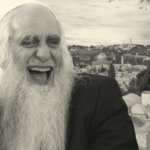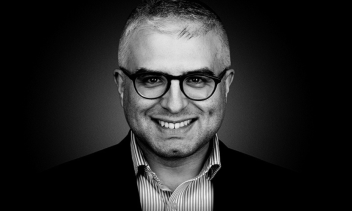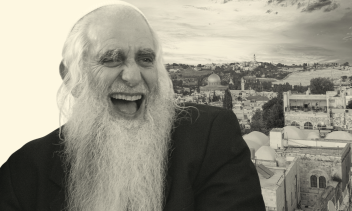Rabbi Avraham Yitzchak Kook (1856 – 1935) was the first Ashkenazi Chief Rabbi of British Mandatory Palestine. Known simply as “Rav Kook” in America, or “Ha-Rav” or “Ha-Reiyah” in Israel, he crossed party lines and religious community affiliation in his early leadership in Israel; he looked to “make the old new, and the new holy,” as he put it in one of his most famous adages. A profoundly iconoclastic thinker, writer, teacher, and leader, Rav Kook looked at some of the tectonic shifts occurring in the Jewish community in Israel with hope and reverential optimism, albeit with concerns and qualifications.
Rav Kook had vast interests, which are reflected in his writings, many of which show a depth of Torah scholarship distilled in a heady brew with intense spiritual aspirations that are at times as personal as they are lofty. Reading Rav Kook is unlike reading the work of other Jewish leaders or scholars: It is more poetic, more hopeful, more confusing, and more multivalent than traditional rabbinic literature tends to be.
Reading Rav Kook, one gets the sense that the world is somewhat more diffused with light than we might think, and that we too have no choice but to put to words the beauty we see therein by any means necessary. Reading Rav Kook is no simple task, as his writings are impressionistic, associative, and dense with words like supernal. I’d advise reading Rav Kook as you would read a poem, with an eye less to the argument or claim he is staking and more to the impression it leaves. It’s helpful to read through a piece of Rav Kook’s writing completely before breaking it apart and digesting it, as the ride is most enjoyed in its entirety as a spiritual journey rather than as a set of theories. If the words or ideas feel heavy, you might want to try reading some of them out loud, to taste them in your mouth.

There are many faces to Rav Kook’s canon. There are a voluminous number of letters (find them in Igrot Ha-Reiyah), essays on national life, Torah writings, poetry, and personal spiritual writings. It’s not always easy to distinguish the lines between these types of literature, and perhaps there is no reason to. Here are our starting points, if you’re looking for an entry to the lights of Rav Kook.
I. Historical Writings
Like all great figures, and in some ways more than most, Rav Kook’s worldview and legacy were impacted by and had impact on the point in history in which he lived. In his eulogy for Herzl and his invocation, his unique stance of hope, messianism, and optimism about the future of the Jewish People shows through particularly strongly. Each of these pieces were controversial, then and now, and each are part of the complex story of the legacy of Rav Kook.
To better understand the “reception history” of Rav Kook, and the twisting paths that his legacy took in the lives of his students, R. Eitam Henkin’s article on historical revisionism in the families of Rav Kook’s disciples is pivotal reading. For Hebrew readers who are interested in Rav Kook’s standing in the younger generations of religious Zionist society today, check out Rav Elchanan Nir’s book Im Ratz Libcha; his chapter on Rav Kook opens with a poignant and fascinating view of the ways the Religious Zionist community has moved towards, away from, and once more towards Rav Kook.
“The Lamentation in Jerusalem,” Rav Kook (eulogy for Herzl)
“Invocation at the Inauguration of the Hebrew University,” Rav Kook
”Historical Revisionism by the Families of Rav Kook’s Disciples: Three Case Studies,” Eitam Henkin
II. Personal and Poetic Writings
Part of what distinguishes Rav Kook from so many other Jewish thinkers is the language in which he thinks and speaks. Rav Kook’s writings have always smelled more like poetry than prose, and the release and publication in recent years of the spiritual diaries of Rav Kook has given us a greater look at his personal and poetic musings. Hebrew readers can enjoy a recent publication of these personal writings in Chadarav, but there has thankfully been a growing body of these writings in translation. These writings express a deep yearning for song, for overflowing brooks of the spirit, and so much more. Read Rav Kook’s famous “Four-Fold Song” alongside these writings.
Translation of Rav Kook’s Journals
“Four-Fold Song,” Rav Kook
III. Torah Writings
“When we gaze at the character of the core of the human soul, we will find the spirit of Israel alive within it. In the inner character of all betterment and wisdom, we will find the light of Torah.”
The light of Torah is the axis mundi of Rav Kook’s thought, the thread that pulls all of his writings towards a common point. This comes through most strongly in his Orot Ha-Torah, in which he offers a profound set of reflections on the study of Torah. Like all else in his worldview, Rav Kook’s thinking on Torah is many-layered, and each point of his thought reacts differently in today’s air. For a contemporary consideration of Rav Kook’s views, read R. Avraham Stav’s article on progressivism and conservatism in the thought of Rav Kook.
“Rav Kook’s Orot Ha-Torah,” Channan Morris
“Progressivism and Conservatism in the Thought of Rav Kook,” Avraham Stav








